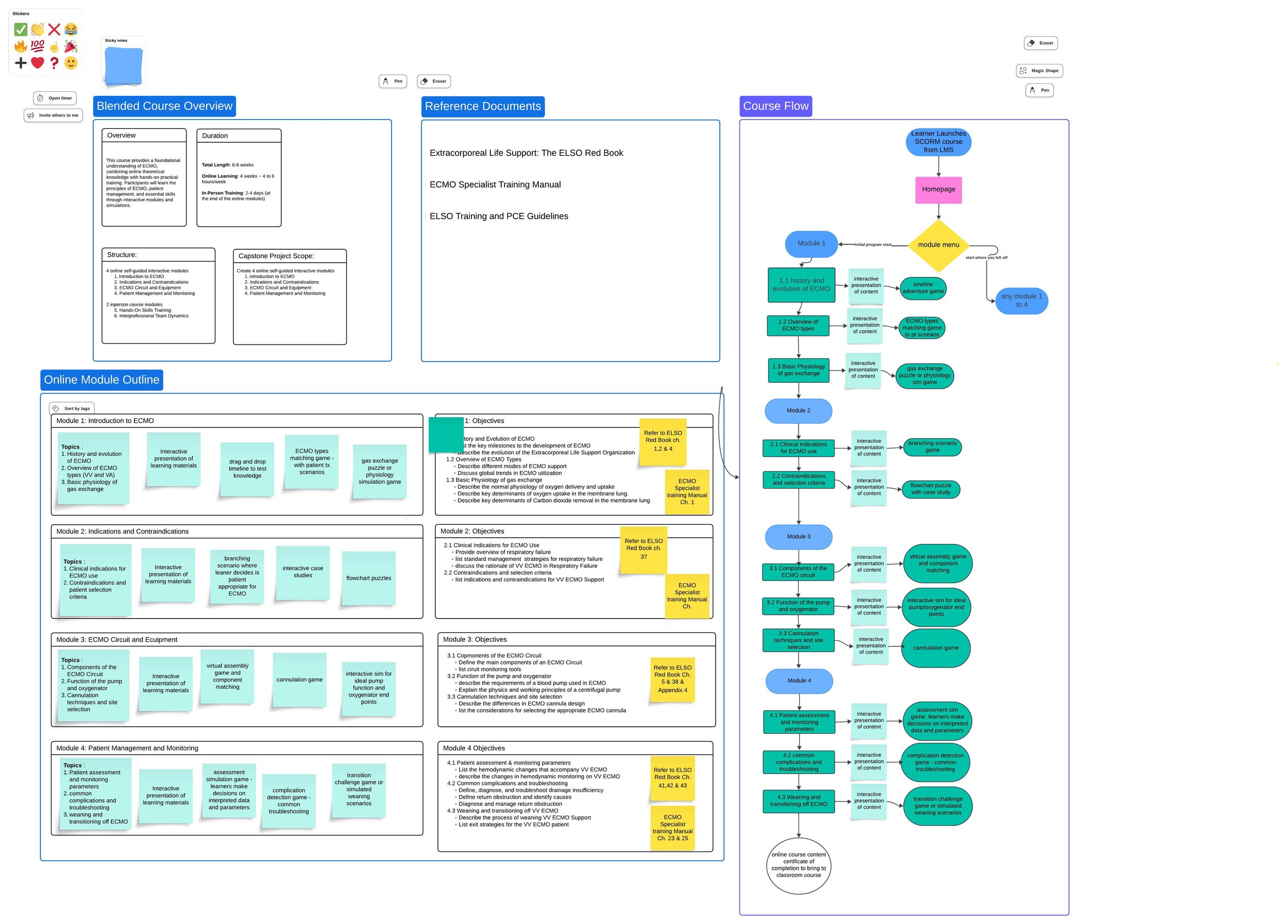AECT Standard 1 (Content Knowledge)
Candidates demonstrate the knowledge necessary to create, use, assess, and manage theoretical and practical applications of educational technologies and processes.
Indicators
-
Candidates demonstrate the ability to create instructional design materials and learning environments using a variety of systems approches.
-
Candidates demonstrate the ability to select and use technological resources and processes to support student learning and to enhance their pedagogy.
-
Candidates demonstrate the ability to assess and evaluate the effective integration of appropriate technologies and instructional materials.
-
Candidates demonstrate the ability to effectively manage people, processes, physical infrastructures, and financial resources to achieve predetermined goals.
-
Candidates demonstrate the contemporary professional ethics of the field as defined and developed by the Association for Educational Communications and Technology.
ARTIFACTS
S.1.1 Creating
Candidates demonstrate the ability to create instructional materials and learning environments using a variety of systems approaches.
Summary:
During the Fall 2024 offering of the EME6613: Development of Technology-Based Instruction course the students were tasked with developing a technology-based course. The artifact here is a Lucid chart submitted as a project brainstorming for a proposed blended learning course. This chart utilized various systems to approach the development of the e-learning project.
The ECMO Foundational course existing methodology is consists of an in person traditional lecture style course. An analysis was completed to assess the existing course methodology and materials. A blended learning course option was recommended to meet the needs of the client. I decided to utilize the lucid chart software to brainstorm the course overview, visualize the online module outlines inclusive of objectives and reference material, and to start to flowchart Module 1.
Competencies and Skills for Instructional Designers:
Perform a needs assessment/analysis
Conduct a needs assessment/analysis and collect data
Recommend options that solve the discrepancies
Perform job, task, and/or content analysis
Comprehend technical content in terms of the entire course content and individual lessons
Write criterion-referenced, performance-based objectives
Sequence the objectives to reflect the curriculum design
Describe the relationship between the objectives, technical content and performance measurement
Select instructional media
Identify instructional media options that address training needs
Recommend /instructional strategies
Describe and provide rationale for the selection of an instructional approach
Develop training program materials
Develop flowcharts to identify learning events at the frame specific level using standardized symbology
Enter data that clearly communicates what will be developed and presented to the user
Select and construct appropriate interactions and user control techniques
Develop course support materials and documentation
S.1.2 Using
Candidates demonstrate the ability to select and use technological resources and processes to support student learning and to enhance their pedagogy.
Summary:
The Fall 2021 offering of the EME6055: Current Trends in Instructional Design the students were tasked with exploring technological tools that could be utilized to elevate instructional design. For this course activity, I evaluated the Web 2.0 tool called OneDrive which is offered through Microsoft’s SharePoint services.
This artifact is a video description on how to utilize the OneDrive tool to support course material development to support student learning. This video has since been utilized by my team to help overview the many uses for OneDrive as we onboard new team members.
video tutorial on how to collaborate within OneDrive
Competencies and Skills for Instructional Designers:
Assess the relevant characteristics of the setting
State a rationale for the selection of the resources and constraints of the development and delivery environments chosen
Perform job, task, and/or content analysis
Analyze the characteristics of a job, task, or body of knowledge
Identify tasks, subtasks, cognitive processes and their sequential and/or hierarchical relationships
Select instructional media
Describe characteristics of instructional media
Evaluate candidate training system hardware and software capabilities and limitations
Prepare end-users for implementation of courseware to students
Provide guidance to users on hardware, software, or courseware
S.1.3 Assessing/Evaluating
Candidates demonstrate the ability to assess and evaluate the effective integration of appropriate technologies and instructional materials.
Summary:
During the Fall 2022 offering of the EDF6284: Problems in Instructional Design for Computers course the students participated in a group activity in which we were tasked with being the Instructional Design Agency for an identified client. As a group, we developed an Instructional Design Proposal to provide resolution for a problem that the client had. The client, LVS, was searching for an effective instructional method to help onboard new researchers for their project. Their existing instructional methods were not conducive to efficiently onboarding of new researchers and as a resolution, they were wanting to have a computer based course created.
This artifact is a design proposal which required assessment of the problem and evaluation of current methodologies in order to integrate appropriate technologies and instructional materials to solve the instructional problem. My role in the group was to assist in assessing client information and evaluating different technological methods that would be appropriate to integrate into our resolution.
Competencies and Skills for Instructional Designers:
Perform a needs assessment/analysis
Conduct a needs assessment/analysis and collect data
Assess Relevant Characteristics of the target audience
Select the target audience characteristics that are appropriate for assessment
Develop a target audience profile
Assess the relevant characteristics of the setting
Identify relevant resources, constraints, and context of the development and delivery environments
Evaluate how the setting characteristics may impact proposed instructional approaches
Perform job, task, and/or content analysis
Analyze the characteristics of a job, task, or body of knowledge
Identify appropriate source documentation to support analysis
Comprehend technical content in terms of the entire course content and individual lessons
Identify prerequisite knowledge and skills for tasks, subtasks, and knowledge
Recommend instructional strategies
Discuss learning theories, instructional design strategies, instructional psychology, and learning
styles appropriate to the curricular objectives
Describe and provide a rationale for the selection of an instructional approach
Design instructional materials that are appropriate to the ability level of the learners


